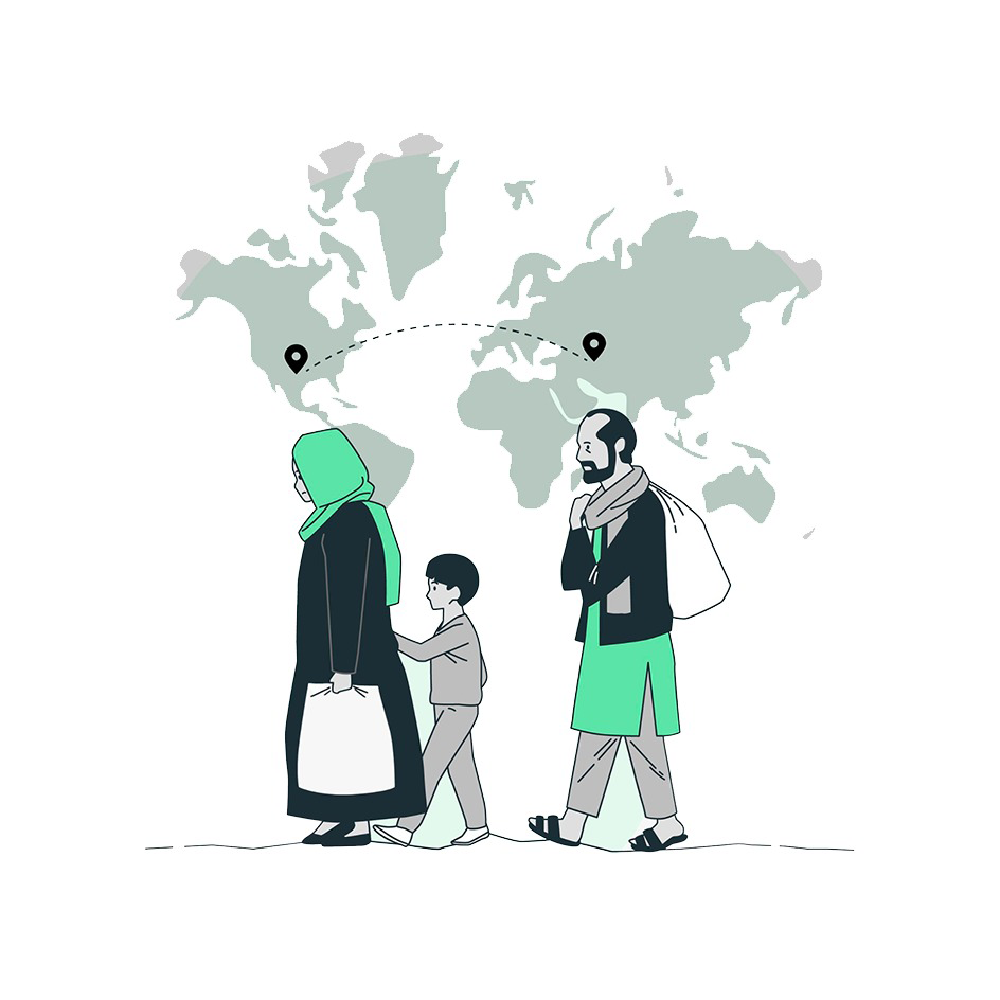Harnessing AI to Advance Human Rights

In the past five years, artificial
intelligence and its various models have evolved from a theoretical scientific
concept into a powerful force reshaping every aspect of the world. This
transformation has sparked a series of ethical questions regarding how AI
models interact with the field of human rights — especially with the emergence of dynamic and
responsive systems that produce interactive results far beyond what other
modern technologies have achieved.
These ethical questions have raised fears
of losing human control and marginalizing the role of values, ideas, and
identity in promoting and protecting human rights. Hence the question arises:
How can we harness artificial intelligence to strengthen human rights values?
And how can these tools be developed to become not only more intelligent but
also more noble — advancing justice, equality, and human dignity?
According to a recent human rights report
titled “Artificial Intelligence, Human Rights, and Social Justice: Building Futures from Latin America,” which surveyed 136
countries, about 39% of them have national AI policies or strategies addressing
human rights. Additionally, 43 countries have “Human Rights Impact Assessment”
mechanisms included within their frameworks, and 24 countries have policies
that address gender equality in the context of AI.
Only 33 countries have frameworks
regulating “work and the right to work” in relation to AI, and among these,
just seven frameworks have legal force. These statistics reflect the global
distribution of AI policies and practices linked to human rights values.
In terms of technical usage, it was found
that in a country like Ireland, 8% of organizations with 10 or more employees
reported using AI technologies in some form in 2023. This offers an idea of the
institutional spread of AI, even though the figure does not specifically
pertain to human rights applications.
Monitoring and
Documenting Human Rights Violations through AI
One of the most prominent uses of
artificial intelligence in the field of human rights lies in monitoring and
documentation. Many violations occur in areas that are difficult to access or
where evidence is quickly erased — and here, AI algorithms step in as a digital
witness that cannot be silenced nor erased by time.
For example, image analysis, geospatial
data, and satellite technologies are used to uncover the destruction of
villages or the existence of mass graves in conflict zones containing human
remains. Organizations such as Amnesty International and Human Rights Watch
have developed AI-based systems capable of analyzing visual evidence within
seconds — a process that used to take weeks of human labor.
Moreover, AI tools for text and data
analysis help trace hate speech or incitement to violence on social media
platforms, enabling governments and civil society to take preventive measures
before crises escalate. These analytical capabilities make AI an active partner
in protecting the right to life, security, and dignity.
Promoting Justice and
Access to Law
Some AI models go beyond monitoring
violations; human oversight remains essential, as the justice system is still
the ultimate authority in addressing both physical and moral violations.
However, some countries have begun using advanced algorithms to conduct
analytical comparisons of past judicial rulings and to offer initial legal
consultations for individuals who cannot afford lawyers.
These models empower people to understand
their rights and access legal information easily, serving as a practical
application of Article 7 of the Universal Declaration of Human Rights, which guarantees equality before the law. Yet, it is
crucial to recognize that using AI in the judiciary still poses many ethical
challenges — including the risk of algorithmic bias and over-reliance on
automated decisions. Therefore, it is necessary to develop oversight mechanisms
ensuring transparency and accountability at every stage of AI design and
application.
The Marginalized and
AI Technologies
Artificial intelligence can become a
powerful tool for empowering marginalized groups, helping them access
opportunities and have their voices heard within often-inaccessible justice
systems. For instance, AI-powered instant translation technologies can bridge
linguistic divides, allowing refugees or linguistic minorities to access public
services without language barriers.
Similarly, AI systems that analyze
demographic data to identify age groups and geographic regions most affected by
poverty or crises can help governments and organizations deliver humanitarian
aid with greater precision — thereby enhancing the right to a dignified life
and development. Furthermore, human rights education has started incorporating
AI models that adapt learning opportunities to each individual’s capabilities,
promoting equal access to quality education, particularly in remote or
underserved regions.
The Dark Side of the
Digital Age: The Collapse of Privacy
However, the other face of this
technological revolution poses serious threats to one of the most fundamental
human rights — the right to privacy. With the increasing use of surveillance
systems and personal data analytics, AI can easily turn into a tool of control
rather than liberation. Hence the urgent need for ethical governance of
technology — establishing legal and regulatory frameworks that ensure data
collection and use are conducted transparently and with respect for individual
rights.
There must also be international mechanisms
to hold accountable companies and institutions that misuse AI in ways that
violate personal freedoms or perpetuate discrimination.
Toward a Shared Human
Intelligence
To harness artificial intelligence as a
positive force for human rights, it must be designed and managed through a
comprehensive human-centered approach based on the triad of ethics, values, and
identity. This requires the continuous involvement of experts, including human
rights activists, academics, and communities directly affected by these
technologies.
AI should not remain the monopoly of large
corporations or governments; rather, it should be a shared human resource
serving the common good. International organizations such as the United Nations
and UNESCO can play a pivotal role in establishing ethical standards and
directing research investments toward projects that promote human dignity.
Ultimately, AI models are mirrors
reflecting our human intentions. If guided by a conscious, ethical, and humane
spirit, they can become powerful tools for achieving justice, equality, and
freedom. But if left unchecked by moral values, they may evolve into forces
that threaten these very principles.
The question, therefore, is not whether
artificial intelligence will affect human rights — for its influence is already
profound — but how we will direct that influence. The future we aspire to is
not a world ruled by algorithms, but one guided by human values and supported
by intelligent technologies.
Harnessing artificial intelligence to
strengthen human rights is a collective responsibility that demands a careful
balance between innovation, wisdom, and moral awareness. Between technological
speed and ethical depth lies the solution to this dilemma — for in the end, the
progress of civilizations is not measured by the machines they create, but by
the dignity and justice they uphold, and by the moral compass guiding their
modern tools.
-------------------------------------------------------------
Read Also:
-
Book Review of “Human Rights in Islam” by Dr. Abd Allah al-Turki
-
AI-Driven Genocide: Gaza Under Algorithmic Aggression
Artificial Intelligence: Evolution or Intellectual Invasion?










